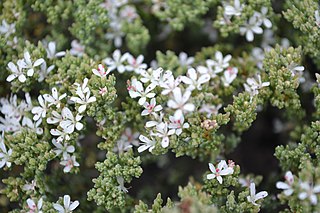
Boraginaceae, the borage or forget-me-notfamily, includes about 2,000 species of shrubs, trees, and herbs in 146 to 154 genera with a worldwide distribution.

Schinus is a genus of flowering trees and tall shrubs in the sumac family, Anacardiaceae. Members of the genus are commonly known as pepper trees. The Peruvian pepper tree is the source of the spice known as pink peppercorn.

Hackelia (stickseeds) is a genus of plants in the borage family, Boraginaceae. It includes 54 species found in North America, western South America, temperate Eurasia, and Australia. 12 species are native to California.

Arnebia is a genus of flowering plants in the family Boraginaceae. There are about 36 species, most are located in the Mediterranean region and eastwards to the Himalayas and northern China, with one species extending into tropical Africa.

Erodium is a genus of flowering plants in the botanical family Geraniaceae. The genus includes about 120 species with a subcosmopolitan distribution, native to Europe, North Africa, Asia, Australia, and more locally in North and South America. They are perennials, annuals, or subshrubs, with five-petalled flowers in shades of white, pink, and purple, that strongly resemble the better-known Geranium (crane's-bills). In English-speaking areas of Europe, the species are known as stork's-bills. In North America they are known as filarees or heron's bill.

Nolana is a genus of hard annual or perennial plants in the nightshade family. The genus is mostly native to Chile and Peru. Species in this genus, especially N. paradoxa, serve as a model system for studies on flower color.

Plagiobothrys is a genus of flowering plants known commonly as popcorn flowers. These are small herbaceous plants which bear tiny white or yellow flowers. Their fruits are nutlets. Although these plants are found predominantly in North America and South America, five species are known from Australia. Of the approximately 65 species described, more than 15 are endemic to California.

Euplassa is a genus of flowering plants in the protea family. It is native to tropical South America, including Bolivia, Brazil, Colombia, Ecuador, French Guiana, Guyana, Peru, Suriname, and Venezuela.

I. M. Johnston, was a United States botanist. He studied at Pomona College in Claremont, California and at Harvard University. His plant collections are housed in the Rancho Santa Ana Botanic Garden, in Claremont, and also in the Gray Herbarium of Harvard University.

Boraginoideae is a subfamily of the plant family Boraginaceae s.s, with about 42 genera. That family is defined in a much broader sense in the Angiosperm Phylogeny Group (APG) system of classification for flowering plants. The APG has not specified any subfamilial structure within Boraginaceae s.l.
Errazurizia (dunebroom) is a genus of flowering plants in the family Fabaceae. It belongs to subfamily Faboideae. It includes four species of subshrubs native to the western Americas.

Buglossoides is a genus consisting of 15 species of annual or perennial herbs, native to Europe and Asia. They grow naturally in habitats ranging from sunny scrub to rocky slopes and woodland areas. These plants are covered in fine bristles or hairs. The stems are upright or sprawling, branched or unbranched, with simple oval to lance-shaped leaves. The small funnel-shaped flowers have flaring lobes and are usually blue or white. Perennial species that are rhizomatous can become invasive and difficult where conditions are suitable.

Frankenia is the only genus in the Frankeniaceae family of flowering plants. Other genera have been recognized within the family, such as Anthobryum, Hypericopsis and Niederleinia, but molecular phylogenetic studies have consistently shown that they all belong inside Frankenia. Frankenia comprises about 70–80 species of shrubs, subshrubs and herbaceous plants, adapted to saline and dry environments throughout temperate and subtropical regions. A few species are in cultivation as ornamental plants.

Trigonotis is a genus of flowering plants belonging to the family Boraginaceae. It includes 70 species which range from southern European Russia to Asia and New Guinea.
Maharanga is a genus of flowering plants belonging to the family Boraginaceae.
Mairetis is a monotypic genus of flowering plants belonging to the family Boraginaceae. It only contains one known species, Mairetis microsperma(Boiss.) I.M.Johnst.
Lasiocaryum is a genus of flowering plants belonging to the family Boraginaceae.
Microula is a genus of flowering plants belonging to the family Boraginaceae.













